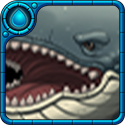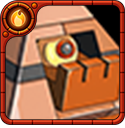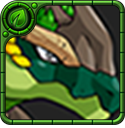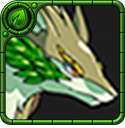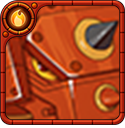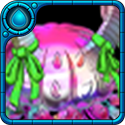All tier list updates are posted to a separate thread: Tier list change log. That is a locked thread purely for the changes, any discussion is done here. You can read the first post there for details about how the changes are posted.
To view the names of monsters in the tier lists below, put your mouse cursor on the images. If using a mobile, click the images.
Notes explaining how to read the tier lists and how they are written (READ THIS FIRST)
-
Above all else, the ranking of a monster in any tier list should be seen as how “useful and powerful” it is in relation to other monsters in the game. Monsters are not graded on their ideal scenarios. Instead, the tier they are placed in reflects how well they work in that section of the game in order to give you a win.
-
The following may not be true for all monsters. However, put simply, the tiers for all lists are as follows:
- S-, S and S+, these monsters are ideal for this setting, often with both high power and reliability. They can potentially take control of battles or be the deciding factor. They can sometimes make other lower tier monsters much better with synergy or combos that are worthy of top tier.
- C, B and A, these monsters work well in this setting with many performing as well as top tier monsters in the right teams or in ideal scenarios. They typically do not bring down your team.
- F, E and D, these monsters do not work well in this setting or you’d only play them in an archetype/team that would not be effective in this setting. Using these monsters in strong teams may lower the power level of the team. Some E and D monsters may have niche use for particular effects/combos.
-
Mythics vs Legendaries vs Super Epics
- All tier lists are done with the monsters relative to others at that quality. However, below is a very rough comparison to go by. Please note this is mainly for the PvP tier lists and may be changed at a later date. Also, this does not factor in the monster cost and monsters fluctuate enormously based on the team they are used in.
- tier 1 = (S+, S, S-) mythics
- tier 2 = (A) mythics = (S+) legendaries
- tier 3 = (B, C) mythics = (S) legendaries
- tier 4 = (D) mythics = (S-) legendaries = (S+) super epics
- tier 5 = (E) mythics = (A, B) legendaries = (S) super epics
- tier 6 = (F) mythics = (C) legendaries = (S-) super epics
- tier 7 = (D) legendaries = (A) super epics
- etc.
-
General section notes
- The general section is for all parts of the game other than PvP. Enemy monsters are typically a bit buffed so monsters which rely on weaker moves are rated lower and monsters which can survive well are rated higher because they tend to help your team more reliably. The AI can be manipulated in some respects (e.g. turn skipping) which drastically improves some monsters and strategies.
-
PvP section notes
- Many monsters become more viable in PvP because, without buffed stats, moves deal high damage and can kill easily. Combat can often come down to who has the turns with their monsters and can take control of the situation before the opponent gets any turns. If someone can be left with the wrong monsters for the situation they will often lose the match. Therefore, combos which can help you take control of the situation are very important and with the right setup you can make a huge number of monsters add great value to your team. What this means for the tier list thread is that more of the monsters in lower tiers (especially legendaries and mythics) are actually very good when used well. Also, if a monster is in a lower PvP tier than General tier that does not necessarily mean it is worse for PvP. It is all relative to the other monsters in each particular setting.
-
The order of the monsters within each tier is alphabetical.
-
There are a number of factors involved in the positioning of a monster. Its “general strength” is an obvious one but the less obvious ones are as follows:
- If they have strict requirements to work (e.g. LINK or RAW)
- If they are part of a group/pairing (e.g. Komaguard and Inuguard)
- A valuation of any combos they are a key part of
- Which list they are in
-
Strict requirements make team building harder to do and unless you have exactly the right monsters your team may be weaker. To reflect this, monsters that rely heavily on something like LINK are below where they should actually be (typically 1 tier in PvP and 1-2 tiers in General). If you can meet the condition without compromising anything in your team then they will perform better than shown in the tier list.
-
These monsters could be ranked as a group, but the tier list goes one step further and shows how strong each part of the group is. The average tier of the group is the overall ranking of how strong it is and usually the best monster(s) are lower tier than they would be while the worst monster(s) are higher tier than they would be as they are “brought down/up” by the rest of the group.
-
Combos are a big part of the game but they rely on having particular monsters. Being a key part of a strong combo will potentially increase a monster’s tier rating. The PvP tier lists value combos more because they can typically be a larger factor in deciding the battle.
-
Each list is geared towards a particular audience and values things slightly differently. This might sound weird, but in practice it makes things much better for the readers. To clarify:
-
General mythic/legendary lists = It’s assumed players have a reasonable collection of legendaries but cannot utilise all combos/synergies (they are factored in less - for the reason explained in the above paragraph too)
-
General super epic / epic lists = These are for a combination of both new players and those with a good collection of legendaries. A few monsters are high because they’re great to begin with even though they will fall out of your favour later as you replace them with legendaries and use only a small number of super epics for specific circumstances. Some niche use SEs are in low tiers but they are still used by top people in certain content (PvE content is very varied, this list does an overall view and mostly highlights what’s generally good rather than the SEs which veterans utilise).
-
General super epics veterans utilise = This is to highlight the SEs that are still useful in PvE even when you’ve got a large collection of mythics/legendaries.
-
PvP mythic/legendary lists = These list how well the monsters do in top level PvP. Some monsters in low tiers will do well in the lower brackets of PvP but most people are interested in what the top are doing and what’s viable up there.
-
PvP super epic list = Contrary to the other PvP lists, this is also taking into account the lower brackets of PvP. Reason being, in top bracket PvP not many super epics are used and these players will know which specific ones they want for specific teams. Top bracket people will typically only consider using the SEs in tiers S+, S and S- but the exact positions of these SEs are also influenced by how good they are for newer players in the lower brackets.
-
Monsters which need adding:
Jel-Shilda, Jel-Chaos
Monsters which need reviewing / I plan to change:
Kasumi (down), the jellyfish (once others are released), Arbustodon (up), Oberon (up), Runedragon (up), Glaciaron (down), Magmalathian (up), Ouroburn (up), Pandora (up), Daji (down), Soral (down), Super epics all need shifting down (especially PvE)



















































































































































































































































